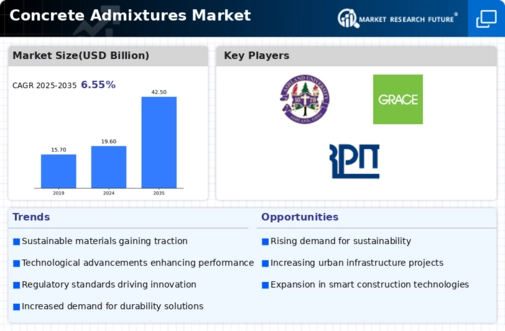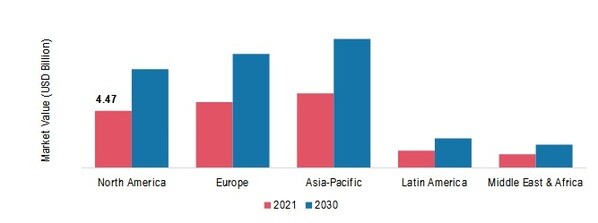Market Trends
Key Emerging Trends in the Concrete Admixtures Market
Notably, significant trends are currently affecting the dynamics of the construction industry through the Concrete Admixtures Market. The demand for durable, high-performance concrete continues to rise due to increased global urbanization, leading to growth in the Concrete Admixtures sector. In addition, sustainability is one of the most prominent trends observed lately in this market segment for concrete additives: with a better understanding of environmental issues involved, do builders nowadays prefer ecologically friendly solutions that decrease carbon footprint during the construction process? In response to these needs, manufacturers are developing new types of admixtures that not only enhance workability and durability but promote sustainable construction practices as well. These sustainable admixtures aim to minimize the pollution resulting from the production of cement while satisfying all modern strength requirements that are set on it. Growing acceptance levels towards high-performance concrete admixtures can characterize another key trend. The complexity associated with infrastructure projects calls for stronger concretes that are able to resist different environmental factors, hence requiring greater strength or longevity than they currently do. There is also an increase in the market of high-performance admixtures aimed at addressing such requirements by improving the compressive strength, durability and workability of concrete. Thus, it is possible to build constructions that will be able to serve for a long time under harsh weather conditions. Additionally, there has been a surge in research and development, with the introduction of advanced admixtures being one major factor responsible for this trend. These research efforts have enabled manufacturers to produce state-of-the-art formulations that solve specific construction problems such as fast setting times, early strength enhancement, or corrosion protection, among others. Such innovations are driven by the goal of offering architects well-rounded solutions that could suit many projects. Geographically, developing countries are driving the growth of the concrete admixtures market. Urbanization and industrialization are on the rapid rise, witnessing most parts of Asia continent, Africa continent, and a large part of South America continent, thus catalyzing demand for better building materials. Consequently, are governments investing heavily in infrastructure development in these regions, thereby creating an environment that is enabling the adoption of concrete admixtures? Moreover, there is also increased partnership between manufacturers and other players in the construction industry within the same marketplace right now. Their partnerships aim at sharing knowledge so as to develop tailor made admixture solutions appropriate for various applications while properly incorporating them into any construction project they deal with. Through fostering such alliances, therefore, enhances overall expansion and evolution in the realm relating to the Concrete Admixtures Market by promoting a more collaborative approach toward addressing ever-emerging requirements from the construction industry.


 Source: Secondary Research, Primary Research, Market Research Future Database and Analyst Review
Source: Secondary Research, Primary Research, Market Research Future Database and Analyst Review



Leave a Comment